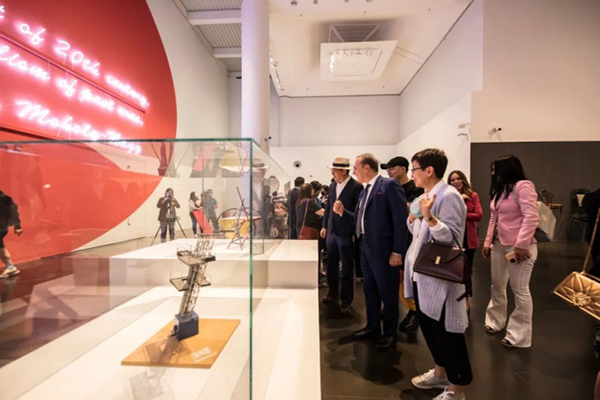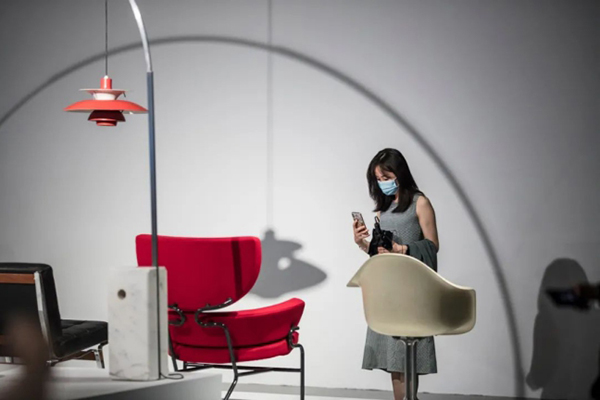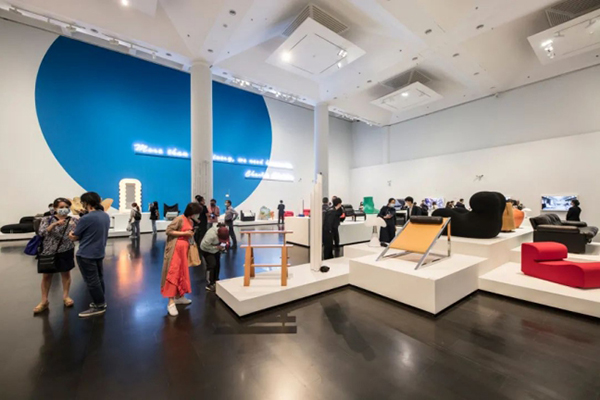Author: SU DanSource: Tsinghua University Art MuseumPublished on: 2021-05-09

Over a century, people eventually realized that designs are the windows through which industries benefit people. This is an irrefutable conclusion drawn from both the past and the present. Opinions vary when it comes to the complexity of that time. Even in this globalized world, it is still beyond the ability of any historian to get the whole picture of that time. However, such history can be depicted through narration, and exhibition is one such way as the works have been meticulously chosen and displayed in a certain exhibition space with specific settings. This should be attributed to the collectors who have recorded history over the years in the most objective way through their collections. A good collection is the embodiment of the finest culture. The greatest narration of history lies in the exhibits, as they concretize ideas and schools and shine through history, inspiring the later generations.
The objects in the Koenig-Biagetti Design Collection come from a family that paid special attention to modern design. This collection is now managed by Musei Italiani. Over a span of a century, this collection has witnessed the birth, development and changes of modern design. Each and every object is invaluable as it has been chosen under vast and drastic cultural and social changes, and in rich and distinct historical context. It took us three and a half years to plan and curate this exhibition despite all the challenges during the COVID-19, and these historical items are now displayed at Tsinghua University Art Museum in an inspiring and appealing way. Every exhibition is a new exploration into the history as people would revel in such creations, and analyze, explore and rediscover something different each time. As Anish Kapoor said, the meaning can only be left up to interpretation. Although designs are created with a much clearer objective than art, they still carry some ambiguity in history, especially the history told by people. Therefore, we believe that this exhibition not only evokes our memory of the development of Modernism, but also provides us with clues for deeper thinking.

The multiple dimensions of modern design signify the twists and turns of its development, which either followed the path of traditional culture, acted as a counterweight of modern physics, or expanded its boundary with the latest scientific discoveries. Designs could sometimes respond positively to the penetration of religion and politics into daily lives, improving its capacity to facilitate breakthroughs of human civilization. However, modern design born in the age of industrialization and mechanization is a brand-new product towards which people have mixed feelings. Therefore, a medium is needed to bridge and integrate the old with the new, leading people to a new world that they expect.
Design Utopia 1880-1980 is not just a spectacular exhibition of 158 modern designs, but also a reflection of how people innovated with restraints over a century. Various ideas and schools emerged during such period, including Arts and Craft, De Stijl, Art Nouveau, Futurism, Deutscher Werkbund, Bauhaus, Constructivism and Memphis. The elite designers at that time not only focused on creating alternates of industrial products, but also tried to wake up the human consciousness hypnotized in the early industrial age. They celebrated and looked forward to the industrial development, but also criticized and deconstructed it. As a result, modern design bridged the tradition and the present, integrated sense and sensibility, and brought back what it means to be human. As Abraham Maslow put it, creativity is an inherent nature of people, these classical designs reflected the state of the society as well as man’s will for conscious activities. Modernism in art and design is a universal movement, and this exhibition brings together objects behind which are great designers and huge technological progress. The ambitions, visions, and the will of the designers, as well as the opportunities of that time, were blend together into vivid history.

One of the crucial ways of historical narrative is revisiting events and backgrounds as they resemble the mudflat and islands washed by the tides of time over the years. While time moves forward, classrooms, workshops, stores and exhibition halls remain bustling. Modern design is like a riverbed slowly emerging through the tides of time. Although the utopian idea of design is sweeping across the globe, modernist ideas are like a gust of wind blowing through the vast territories and diverse cultures in this world into people’s heart. The practice of modernism is like the runoffs on the ground surface emerging at different times in Europe, North America and Asia, and flowing in different paths compared to the mainstream. They are either welcomed or resisted by various traditional cultures in various regions and have thus taken in multifarious features. Modernism is moving towards the right track in its development. While new problems continue to emerge in this globalized time, and geography remains one of the root causes for many problems, we can still see a grand ideal is calling us, and an increasingly diverse group of people practicing modernist ideas without hesitation. The utopian spirit remains forever as the driving force of historical development.